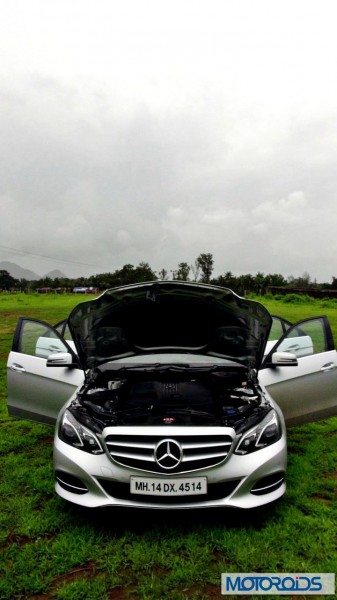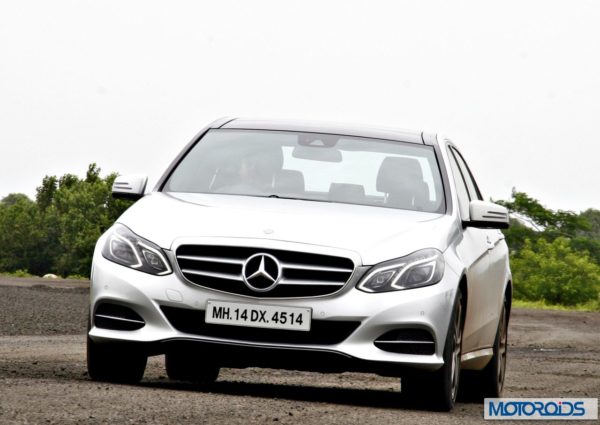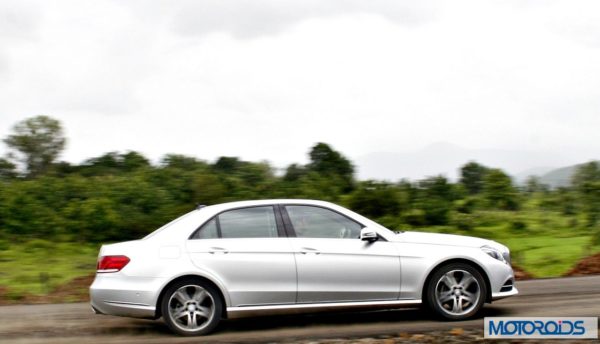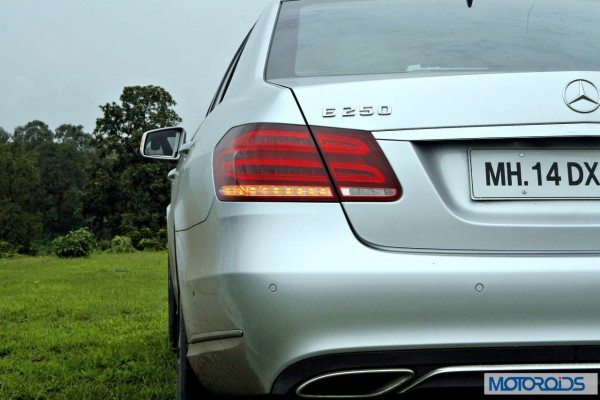Engine, transmission and performance

Our test car, the E250 CDI comes powered with a 2.2 liter (2143cc) inline 4 diesel engine. The peak power output for the engine is rated at 204bhp at 4200 rpm, while the peak torque of a prodigious 500 Nm is produced between 1600-1800 rpm. All those numbers come together to help the e3250CDi sprint from a standstill to 100 km/h in well below 8 seconds (7.5 s as claimed by Mercedes). The top speed is 242 km/h.
The new generation engine, featuring low-emissions and better refinement is smooth and linear as ever. Appreciably quiet around the 200-2500 rpm rev range, the engine gets slightly vocal only when you rev it up. There is ample power and torque available from as low as 1000 rpm, and there is absolutely no impression of a turbo lag as you press the throttle from low revs.

New generation common-rail technology on the engine features an injection pressure which has been increased to up to 2000 bar, optimized combustion chambers, and extremely fast and precisely controlled piezo injectors. Added refinement comes courtesy of two Lanchester balancer shafts. As an added tech, the radiator shutter reduces the air resistance if the engines require only moderate cooling.
The engine is mated with a further optimized version of the 7G-Tronic transmission with a Plus tag.

Compared to the preceding 7G-TRONIC transmission, the electro-hydraulic control unit has been enhanced, while the engine and transmission software has been optimised, resulting in further improved gearshift dynamics and gearshift quality. Furthermore, the 7G-TRONIC PLUS is tuned to give the driver more direct response to changes in the accelerator pedal position. ECO start/stop feature comes as standard. The engine is automatically switched off whenever the vehicle is at a standstill.
Mercedes-Benz is also promoting their Direct Select feature which allows the driver to select the drive mode from a selector lever behind the steering wheel. In all honesty, we are not very big fans of this feature, as newbie drivers may end up putting the car in neutral thinking of the selector lever as an indicator stalk. If you were to accelerate hard after turning the indicator, you run a chance of entering Neutral, and losing drive, which can be hazardous in certain circumstances.

Apart from the automatic shifts, gears can also be shifted via the steering-wheel mounted gearshift paddles. You can switch to sport mode for more aggressive shifts, which hold on to the revs for longer.

We loved the refined engine of the e250 CDI, with its useable power, spirited acceleration and linear character. It’s got enough spunk if you wish to drive spiritedly, and it can cruise at 1400-2000 rpm all day long at 100-120 km/h if your focus is efficiency. It’s just the perfect engine for our kind of conditions.
Next Page for Ride and Handling>>>
